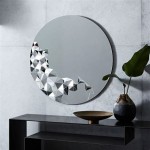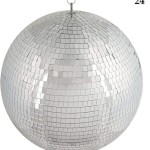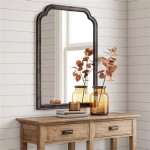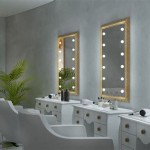French Style Gilt Mirrors: A Reflection of Elegance and History
French style gilt mirrors represent a timeless elegance, echoing centuries of French artistry and design. Their ornate frames, shimmering with gold leaf or gilt paint, add a touch of opulence and grandeur to any space, from classic interiors to modern settings.
The history of French gilt mirrors can be traced back to the 17th century, during the reign of Louis XIV, the Sun King. This era was marked by a flourishing of decorative arts, with a particular emphasis on luxury and magnificence. Mirrors, previously rare and expensive, became more accessible due to advancements in glassmaking techniques. This accessibility, coupled with the royal court's penchant for extravagant decoration, led to the rise of the elaborately framed mirror as a key element of interior design.
The French Rococo style, which followed the reign of Louis XIV, further elevated the art of mirror making. Rococo design, characterized by its asymmetry, curves, and intricate ornamentation, found a perfect canvas in the gilt mirror frame. Artisans crafted frames with elaborate carvings depicting shells, scrolls, flowers, and foliage, often incorporating rockwork and C-scrolls. These mirrors served not just as reflective surfaces, but as works of art in their own right.
The application of gilding – the process of applying gold leaf or gold paint – to the frames significantly contributed to the opulent effect. Genuine gold leaf, painstakingly applied by skilled artisans, resulted in a rich, luminous finish that captured and reflected light, adding to the perceived grandeur of a room. The use of gilt paint, a more affordable alternative, allowed for wider accessibility while still mimicking the luxurious appearance of gold leaf.
The styles of French gilt mirrors vary significantly, reflecting the different eras and design movements that influenced their creation. Louis XIV style mirrors, for instance, tend to be grand and symmetrical, often featuring rectangular or arched shapes with elaborate carvings inspired by classical motifs. Rococo mirrors, in contrast, embrace asymmetry and more whimsical decorations, including natural elements like flowers and shells.
Later styles, such as Neoclassicism and Empire, also influenced the design of French gilt mirrors. Neoclassical mirrors often feature straighter lines and simpler ornamentation, drawing inspiration from ancient Greek and Roman art. Empire style mirrors frequently incorporate symbols of power and victory, such as eagles, laurel wreaths, and military motifs.
The size and shape of French gilt mirrors can also vary considerably. Large, overmantel mirrors were a popular choice for grand living spaces, designed to reflect the light and amplify the sense of spaciousness. Smaller mirrors, often used in bedrooms or dressing rooms, might feature more delicate frames and intricate details.
Trumeau mirrors, a distinctive type of French gilt mirror, combine a mirror with a painted or carved panel above. These panels often depict pastoral scenes, mythological figures, or decorative motifs, adding another layer of artistry to the piece. Trumeau mirrors were particularly popular during the 18th century and remain sought-after by collectors today.
Identifying antique French gilt mirrors requires careful examination of several factors. The quality of the carving, the type of gilding, and the overall design can offer clues about the mirror's age and origin. Examining the back of the mirror can also provide information about the construction techniques and materials used.
Modern reproductions of French gilt mirrors are widely available, offering a more accessible way to incorporate this classic style into contemporary interiors. While reproductions may not possess the same historical value as antiques, they can still provide a touch of elegance and sophistication to a room. When choosing a reproduction, it's important to consider the quality of the materials and craftsmanship to ensure a durable and aesthetically pleasing piece.
Incorporating a French style gilt mirror into a modern interior can add a touch of timeless glamour. These mirrors can serve as statement pieces, drawing the eye and creating a focal point in a room. They can also be used to enhance the natural light, making a space feel brighter and more spacious. Whether placed above a fireplace, in a dining room, or in a bedroom, a French style gilt mirror can elevate the overall aesthetic of a space, adding a touch of history and elegance.
The enduring appeal of French gilt mirrors lies in their ability to seamlessly blend artistry and functionality. They serve not only as reflective surfaces, but as decorative elements that can enhance the beauty and character of any space. From the grand palaces of the French aristocracy to modern homes, these mirrors continue to reflect a timeless elegance and a rich history of artistic craftsmanship.

Glorious Gilt Mirror Full Length French Style Bedroom In Gold With Ornate Crest

French 19th Century Régence Style Gilt Mirror Haunt Antiques For The Modern Interior

Large Oak Leaf Gold Gilt Mirror Ornate Classic French Style In Distressed

Antique French Louis Xv Style Gold Gilt Mirror 1820 For At Pamono

Antique French Louis Xv Style Gold Gilt Mirror 1820 For At Pamono

Ornate Gilt Gold French Style Overmantle Bevelled Mirror

Late 19th Century French Louis Xv Style Gilt Wall Mirror Moonee Ponds Antiques

Late 19th Century French Louis Xv Style Gilt Wall Mirror Moonee Ponds Antiques

French Louis Philippe Style Painted Gilt Mirror 1950s For At Pamono

Sold 19th Century Louis Xv Style Gilt Wall Mirror Ashbrook Antiques








